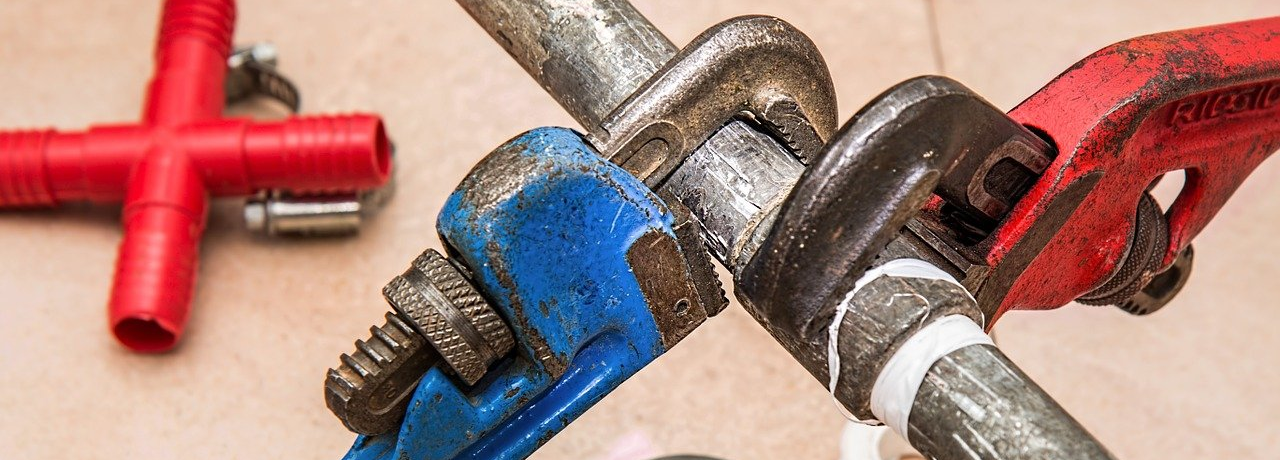24/7 Emergency Service
Call Us (208) 812-9829
How to Find a Leak in Your Bathroom
Ryker Bingham | Mar 26, 2021

- Identify the Leak: Is there visible water damage? Have you seen stains or noticed any unpleasant smells?
- Find the Source: The leak could be in an easy-to-access location, or it could be hidden.
- Address the Plumbing Problem: Time to roll up your sleeves and stop that leak!
- Repair the leak, if possible, or call in the big guns for help!
Telltale Signs of Bathroom Leaks
The first signs of a leak in a bathroom are typically stains, discoloration, or watermarks on the ceiling. Depending on the amount of water leaking, your ceiling could be damp or fluctuate between wet and dry. The longer the leak occurs, the more likely your home will have more significant water and structural damage.
When you have a leak in your bathroom, you may:
- Have visible water damage or discoloration
- See or smell mold or mildew growth
- Have blistering, bubbles, or drooping in the ceiling
- Hear a leak or drip
What Are Some Common Sources of Bathroom Leaks?
Finding the source of the leak in your bathroom can help prevent further damage to your home. First, start with some of the easiest to access locations of common leaks, including:
- Water supply lines to the sink and toilet
- The sink trap
- The wax ring underneath your toilet
- Cracked or worn caulking or gaskets
Finding & Fixing The Leaks
According to homeguides.sfgate.com, most leaks will happen at a “plumbing connection,” such as at a water supply line attachment or at “connector joints in the drain pipes.” To check if your bathroom leak is occurring at a plumbing connection, simply touch the pipes to feel if they are damp.
If your water supply line is dry, it’s important to check the sink trap next. All you have to do is turn on the water and leave it running while you check the drain trap underneath the sink for a leak. See a drip in the trap? Then you found the source of your leak!
A leaking wax toilet ring might not show up as easily as a drip in the water supply line or a leak in the sink trap. While you may not see any visible leaks or water damage on your bathroom floor, once you remove the toilet, you’ll see proof of water around the toilet range if you indeed have a leaky wax ring. To fix, remove the toilet and replace the wax ring. It’s as simple as that!
Cracked or worn caulking or gaskets are a recipe for sneaky leaks. Water can easily seep between the walls and the sink or tub. Over time, this can cause even more significant water damage, so if you notice worn caulking or gaskets, it’s best to replace them early.

What If You Have a Hidden Bathroom Leak Causing Water Damage?
You’ve checked the usual suspects in your bathroom for leaks but haven’t had any luck. When this happens, it could be a hidden leak causing the damage. In this case, you’re going to have to do more sleuthing to identify the leak.
Dripping shower pipes, drain pipes, and tub pipes are often the cause of hidden bathroom leaks. Since water flows down, you will likely notice the evidence of the leak on the ceiling below the bathroom before you notice it in the bathroom itself.
Finding and Fixing Hidden Bathroom Leaks
There are a few things it could be, including a cracked pipe, a bad tub or shower drain seal, or even a crack in the shower pan. Hunker.com suggests the following to help you identify hidden leaks as easily as possible:
- Take out the shower drain grate
- Place a rag in the pipe to prevent water from going inside it
- To test for leaks, turn on your shower and wait for the water level in the shower pan to rise
- Depending on if your bathroom is on the top or bottom level of your home, keep an eye out for any dripping or leaking
- Is the leak “coming from the drain?” If so, then the drain seal needs to be fixed.
- If the leak is coming from somewhere else, it could be that your “shower pan” is “cracked.”
- No dripping or leaking? Don’t give up! Take out the rag and turn on the shower again. This time, keep a close eye on the drain pipes for any existing leaks. “P-trap connections” are often the culprit.
When to Call a Professional
Keep in mind that some bathroom leaks can be harder to identify and fix than others, especially if those leaks have caused significant water damage to your home. If you have tried everything you can and you still can’t find the leak, it’s best to call a licensed professional, whether that be a plumber or a water damage restoration company. Either will be able to fix the leak, clean up the damage and get your home back to normal in no time.
Depending on the severity of the damage, they may utilize specific methods to remove the water.
Conclusion
From leaky sinks and drains to faulty wax rings on toilets to hidden drips in shower pipes, there are a lot of places in your bathroom that could be causing pesky leaks. Remember, start with the easy-to-access and most common sources first. If you come up empty-handed, look into those hidden leak locations next. And, if you keep coming up short, consider giving a professional a chance before the leak gets any worse.
Sources
Copyright © 2024 Standard Restoration. All Rights Reserved. Website & Marketing by Local Visibility